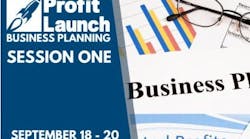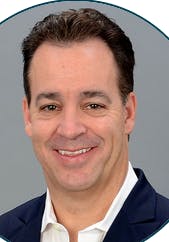Objections are a natural part of the consumer buying process. They are simply the manner in which prospects communicate their status in the buying process. They come in forms of challenges, opportunities, problems, requests for more information, cries for help to better understand, stalls and value shortcomings.
Sometimes one objection will masquerade as another to conceal the true objection.
Your job is to determine the true objection and nature or root thereof. An objection is simply a person’s way of requesting additional information before making a new and more informed decision.
People will not change their mind, but they will make new decisions based on new information you provide and do so in your favor if you properly determine what new information they require to make a favorable decision.
If there are no objections, it could mean that the prospect is apathetic. But when there are objections, the key to overcoming them is to turn negative to positive.
To effectively deal with objections, learn what type of buyer you are dealing with. Create customer-specific variants of three basic ways to handle common objections:
- Learn as much about the customer as possible.
- Never let an objection take you by surprise.
- Never deal with an objection at an emotional level.
It's not enough to know about the industry and the particular client with which you are dealing in order to handle objections effectively. You also have to discern the best way to approach the individual decision maker based on the way that person approaches information. Knowledge of the industry and the particular person will tell you whether an objection, especially about price, is a real condition or simply a mask for another underlying problem.
If there are no objections, it could mean that the prospect is apathetic. But when there are objections, the key to overcoming them is to turn negative to positive.
For example, a person may not really have the cash to make an outright purchase. Armed with this knowledge, you can suggest lower-cash alternatives or financing, for example — when appropriate.
Drew Cameron will be a featured presenter at Contractor Leadership LIVE
Once you know the real reason behind the stated objection, you need to look at the buyers themselves. The type of person dictates your response.
There are three basic types of decision makers:
- The relationship buyer who wants to get to know you.
- The driver is a person who wants to be in control. Price objections are often this person's most common concern.
- The analytical buyer. This person wants a lot of data.
If you do your homework, an objection should never take you by surprise. In addition, you should never engage at an emotional level or take anything personally. Even if the customer bases their objections on factual error, your first response should be to validate the customer's feelings.
Objections help you understand your customers. There is no "one answer fits all" for objections. When you turn your knowledge into customer-specific responses, you move the sales process toward a successful closing.
Objections help you understand your customers. There is no "one answer fits all" for objections. When you turn your knowledge into customer-specific responses, you move the sales process toward a successful closing.
The problem for most salespeople is that they wait to deal with objections after the presentation and conveyance of price. In reality, this is a cop-out for a weak selling system.
Objections become built-in excuses for not closing a particular piece of business. This way, the salesperson is not accountable for their sales performance or lack thereof. The prospect becomes the scapegoat, and their objections are the reasons given.
Also, never answer unasked questions or respond to or defend against a statement a prospect makes. Use a nurturing statement, followed by a softening statement, and then a reversing question to gain clarity; understand the reason for the statement, and learn the true meaning behind what was stated. This technique is also a great way to find out why the customer asks any question, especially of an obscure or “left field” nature.
The title of this section is apt because that’s what glib clichés, catchy one-liners and creative closes are all about. A poor salesperson with a weak selling system makes a presentation, gets hit with a objection, and out come more punch lines than even Rodney Dangerfield could offer in an attempt to convince the prospect that the company and the product are right for the customer.
Objections are only requests of some form and issues with which you must handle, just like a car salesperson must deal with the issue of car color or options. No more. No less. Don’t be afraid.
In other words, the salesperson makes an inappropriate, untimely and ill-advised presentation to a poorly qualified prospect and gets tagged by the prospect’s stalls and is painted in a corner, trapped with no conceivable way out, and now needs a trick or a miracle to stay alive. Hopefully the salesperson finds a way out (since the front door is off limits), to have even a ghost of a chance (i.e. skin of his or her teeth, slimmest of margins, shot in the dark, roll of the dice, snowball’s chance in hell – how ‘bout those for some clichés?).
Why is the front door off limits? When weak salespeople don’t deal with objections upfront before the presentation step and hold themselves and their prospect accountable to setting the ground rules for laying all the cards on the table so that a simple “yes” or “no” decision can be reached after the presentation is given, they have decided to make the sales process a game of “cat and mouse” or tennis once the price and value proposition have been presented.
A better way is to handle all objections upfront before a presentation. To gain agreement as to how the process should flow from that point through the presentation and even agreement as to how and when a decision will be made. [I started to fix this then realized that I just didn't understand it.] You can then coordinate the presentation to meet the decision timeframe.
What follows are some discussions on how to handle objections before they put a roadblock in the selling process, and some ways to deal with objections should they sneak up on you after the fact.
Remember, objections are only requests of some form and issues with which you must handle, just like a car salesperson must deal with the issue of car color or options. No more. No less. Don’t be afraid.
Besides, they are not your objections to handle, deal with or overcome. The objection resides in your prospect’s head. Your job is to find out what information will satisfy their concerns through questioning, listening and being appropriately responsive.
Most salespeople are reactive to objections, which is what creates conflict. Overcoming objections is like fighting with a prospect and being coercive while trying to get them to yield to duress and manipulation.
Again, the better way is to be proactive and deal with objections before they arise so that the presentation is a discovery process for you and your prospect. You discovering if it’s a sale you want and prospect you can and want to help, and the prospect discovering if you, your company and your solutions are right for them. Yes, one of you may discover that the other is not the right choice, but that, my friends, is the beauty of capitalism and a story for another day.
Should objections still arise after the fact, be receptive and responsive after understanding where the objection is coming from and why.
Drew Cameron is one of the EGIA Contractor University faculty members. EGIA Contractor University has assembled the most experienced and dynamic faculty ever put together. Faculty members have personally built some of the most successful contracting companies in America. Learn more about EGIA Contractor University and EGIA membership, offering contractors all the tools they need to run and grow a successful contracting business, while freeing up time and money.
Drew Cameron, "America’s Most Sought After Sales & Marketing Strategy and Success Adviser to Home Services Contractors," is president of HVAC Sellutions & Energy Design Systems, Inc.; the premier alliance providing i









